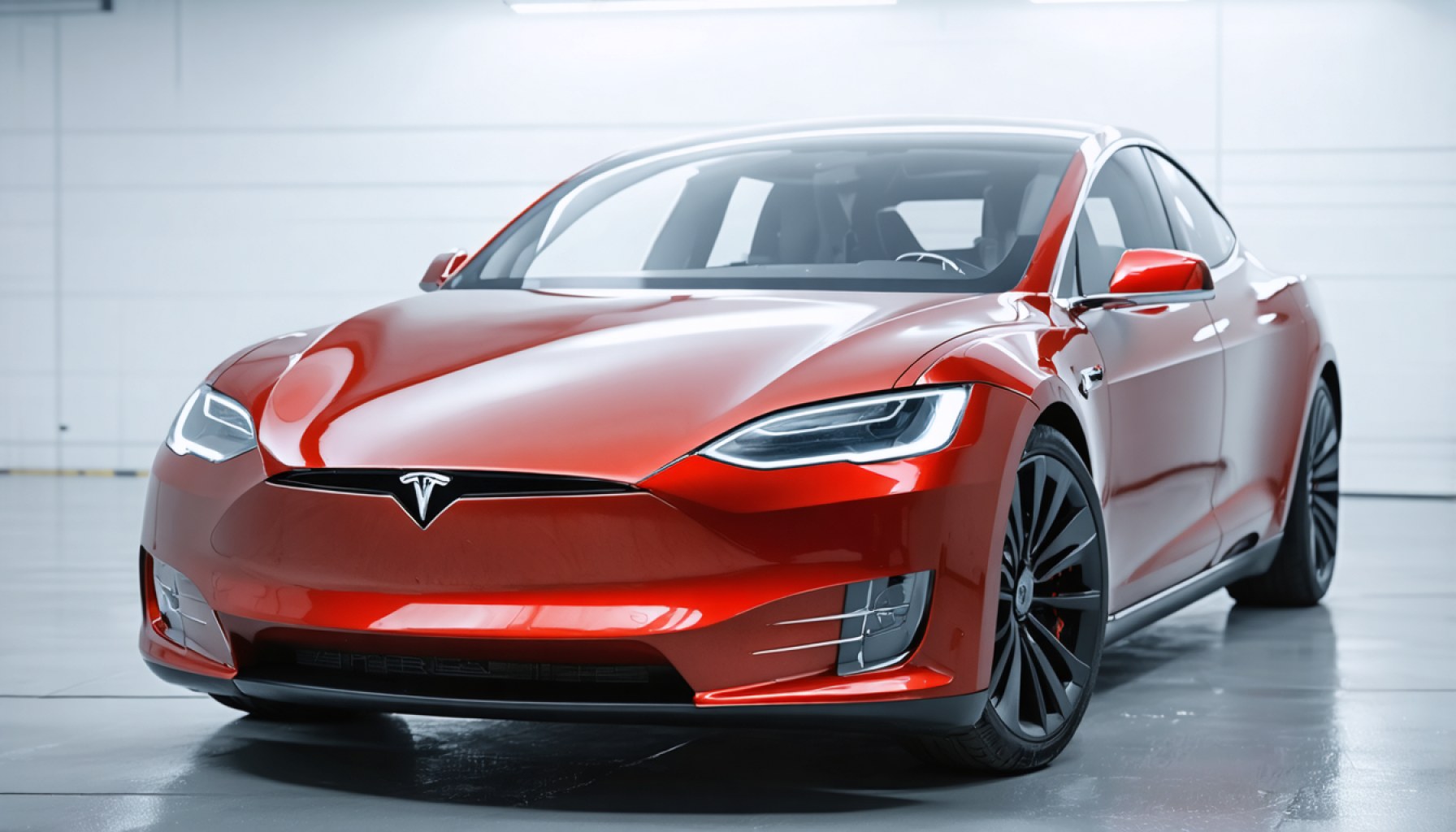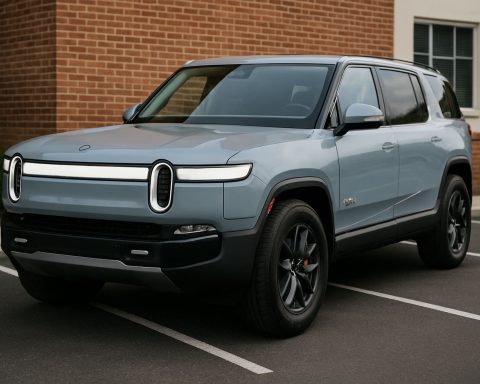- Electric vehicles led by Tesla and BYD are spearheading a transformation in the automotive industry.
- A recent study reveals the secrets of Tesla’s and BYD’s groundbreaking battery technologies.
- Tesla’s 4680 battery cell, introduced in 2020, excels in energy density, cost-efficiency, and extended range.
- BYD’s Blade battery, launched in 2020, leads in affordability, safety, and thermal stability, bypassing traditional lithium-ion hazards.
- Key differences include Tesla’s focus on performance versus BYD’s emphasis on efficiency and economic practicality.
- Both companies innovate in charging and discharge mechanisms and share similarities like laser welding technology.
- The study’s insights set new benchmarks for future electric vehicle battery developments and management.
- Tesla and BYD are aligning in their mission to revolutionize movement with sustainable, electric mobility solutions.
Electric vehicles, the vanguard of automotive evolution, are transforming our roads. Leading this quiet revolution are two titans: Tesla and BYD. While Tesla’s innovative designs have long reigned over markets in Europe and North America, BYD dominates its turf in China. Until recently, these giants shrouded their battery technology in mystery.
A groundbreaking study published in Cell Reports Physical Science finally pries open the vault of secrets hidden within these mighty power sources. In a meticulous examination conducted by researchers from Germany’s RWTH Aachen University, the intricacies of Tesla’s and BYD’s battery technologies are laid bare, offering a rare peek behind the curtain of their engineering marvels.
Tesla, the brainchild of audacious engineers and captained by trailblazer Elon Musk since 2003, has not just created electric cars, but delivered a new dream. At the heart of this vision is the Tesla 4680 battery cell, a marvel of engineering introduced in 2020. This cell pushes the boundaries with enhanced energy density, reduced costs, and extended range. The gleaming vessels, powered by this technology, dance with the promise of endless roadways.
On the other side of the globe, BYD stands with a quieter, yet equally formidable approach. Founded in 1995, BYD turned from a humble battery supplier to a titan of affordable electric vehicles, emphasizing efficiency and safety. The Blade battery, a beacon of this philosophy launched in 2020, reshapes the paradigm with its compact, cost-effective, and thermally stable design, sidestepping the hazards of conventional lithium-ion technology.
In dissecting these batteries, researchers uncovered fascinating contrasts and shared innovations. Tesla’s design screams performance, with high-energy density fitting perfectly into the thrill of long journeys. Conversely, BYD’s battery beats with efficiency, crafted for practicality and economic ease. Remarkably, both eschew silicon anodes, despite its touted benefits in research circles, illustrating a fascinating choice in material strategy.
Charging and discharge mechanisms reveal further intrigue: Tesla’s 4680 cells employ a unique electrode binder, while BYD’s Blade cells use an innovative separator lamination technique. Such choices ripple through performance, durability, and manufacturing economics. Yet, in the dance of contrasts, unexpected similarities emerge: both employ laser welding, rejecting ultrasonic methods, and retain comparable proportions of passive components despite size disparities.
This unveiling holds profound implications for the future contours of electric vehicle management and innovation. As researchers continue to untangle these designs’ trade-offs, the knowledge gleaned sets a new benchmark for future developments. Understanding these design choices, researchers can refine batteries for longevity and performance, charting a course toward more versatile and viable EV solutions.
Tesla and BYD, each with a distinct voice, are harmonizing on a common mission: to redefine how we perceive movement in a world increasingly inclined toward sustainability. Their journeys, now intersecting through shared insights, hint at a future where the possibilities of electric mobility are as boundless as the horizon itself.
The Secrets of Tesla and BYD Battery Technologies Revealed: What You Need to Know
Understanding the Battery Technologies of Tesla and BYD
Electric vehicles are reshaping the automotive industry, sparked by innovations from pioneers like Tesla and BYD. Though based on different continents, these companies share a common mission: revolutionizing transportation through superior battery technology.
Tesla’s 4680 Battery Cell: An In-Depth Look
Features and Innovations:
– Energy Density & Range: Tesla’s 4680 cell boasts higher energy density than previous models, enabling longer travel distances on a single charge. This leap in technology aligns with Tesla’s vision of long-range electric mobility.
– Cost Efficiency: One of the 4680’s core innovations is its cost reduction in production, making the technology more accessible and likely to drive down the overall cost of electric vehicles (EVs).
– Design & Performance: The cylindrical design helps in dissipating heat more effectively, improving safety and battery life. Tesla also uses a unique electrode binder to boost performance and endurance.
BYD’s Blade Battery: A Safe and Efficient Alternative
Features and Innovations:
– Thermal Management: BYD’s Blade battery offers superior thermal stability, thus enhancing safety. It effectively mitigates risks associated with overheating, a common concern in lithium-ion batteries.
– Cost-Effectiveness: The Blade battery is not only safer but also cheaper to produce, aligning with BYD’s goal of providing affordable electric cars globally.
– Efficiency & Durability: Known for its long cycle life, the Blade battery maintains a stable charge and discharge rate, making it a practical choice for urban commuting.
Pressing Questions: Tesla vs. BYD
How do these battery technologies impact vehicle performance and safety?
– Tesla’s Approach: Prioritizes performance and range, key for long-distance travel. Its high energy density and efficient heat dissipation cater to enthusiasts seeking adventure on the road.
– BYD’s Approach: Emphasizes safety and efficiency, making it ideal for urban commuters who prefer practicality over speed. The Blade battery’s thermal stability reduces overheating risks, providing peace of mind.
Industry Trends and Future Predictions
– Market Forecast: The global EV market is expected to grow, with battery technology advancements playing a pivotal role. According to a McKinsey report, the EV market could see a CAGR of 25% through 2030.
– Innovation Pipeline: Both companies are likely to continue aggressive R&D investments to advance battery technologies, aiming for faster charging times and enhanced vehicle integration.
Pros and Cons Overview
Tesla’s 4680 Battery
Pros:
– Higher energy density.
– Greater range per charge.
– Cost efficiencies in production.
Cons:
– Still evolving in manufacturing scalability.
BYD’s Blade Battery
Pros:
– Superior safety and thermal management.
– Cost-effectiveness.
– Suitable for a wide range of EVs.
Cons:
– Slightly lower performance output compared to high-energy-density counterparts.
Actionable Recommendations
1. For Potential EV Buyers: Assess driving needs (e.g., distance, usage) to choose between performance or safety-focused battery tech.
2. For Investors: Consider company R&D capacity and market strategy as indicators for future growth.
3. For Industry Stakeholders: Stay informed about battery advancements to remain competitive in the evolving EV landscape.
Relevant Links for More Information
– For the latest electric vehicle insights, visit Tesla’s official website.
– Explore BYD’s innovative solutions at BYD’s official website.
Tesla and BYD are leading the charge in battery innovation, driving us toward a future where electric mobility is sustainable, efficient, and safe. Keep an eye on these technologies as they continue to evolve.








